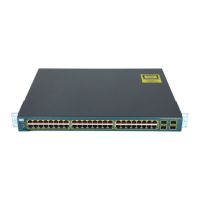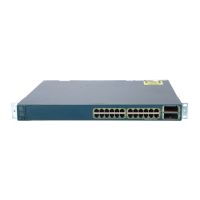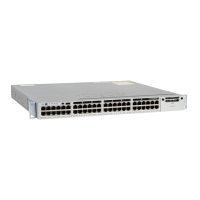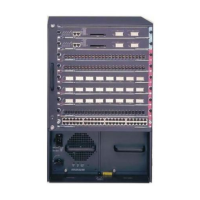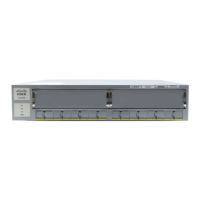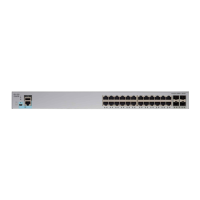13-4
Catalyst 3750 Switch Software Configuration Guide
78-16180-02
Chapter 13 Configuring VLANs
Understanding VLANs
For more detailed definitions of access and trunk modes and their functions, see Table 13-4 on
page 13-18.
When a port belongs to a VLAN, the switch learns and manages the addresses associated with the port
on a per-VLAN basis. For more information, see the “Managing the MAC Address Table” section on
page 7-20.
Dynamic access A dynamic-access port can belong to one VLAN (VLAN
ID 1 to 4094) and is dynamically assigned by a VMPS. The
VMPS can be a Catalyst 5000 or Catalyst 6500 series
switch, for example, but never a Catalyst 3750 switch. The
Catalyst 3750 switch is a VMPS client.
You can have dynamic-access ports and trunk ports on the
same switch, but you must connect the dynamic-access
port to an end station or hub and not to another switch.
For configuration information, see the “Configuring
Dynamic-Access Ports on VMPS Clients” section on
page 13-30.
VTP is required.
Configure the VMPS and the client with the
same VTP domain name.
To participate in VTP, there must be at least
one trunk port on the switch stack
connected to a trunk port of a second
switch or switch stack.
Voice VLAN A voice VLAN port is an access port attached to a Cisco
IP Phone, configured to use one VLAN for voice traffic
and another VLAN for data traffic from a device attached
to the phone.
For more information about voice VLAN ports, see
Chapter 16, “Configuring Voice VLAN.”
VTP is not required; it has no affect on a
voice VLAN.
Private VLAN A private VLAN port is a host or promiscuous port that
belongs to a private VLAN primary or secondary VLAN.
To use this feature, the stack master must be running the
enhanced multilayer image (EMI).
For information about private VLANs, see Chapter 15,
“Configuring Private VLANs.”
The switch must be in VTP transparent
mode when you configure private VLANs.
When private VLANs are configured on the
switch, do not change VTP mode from
transparent to client or server mode.
Table 13-1 Port Membership Modes (continued)
Membership Mode VLAN Membership Characteristics VTP Characteristics

